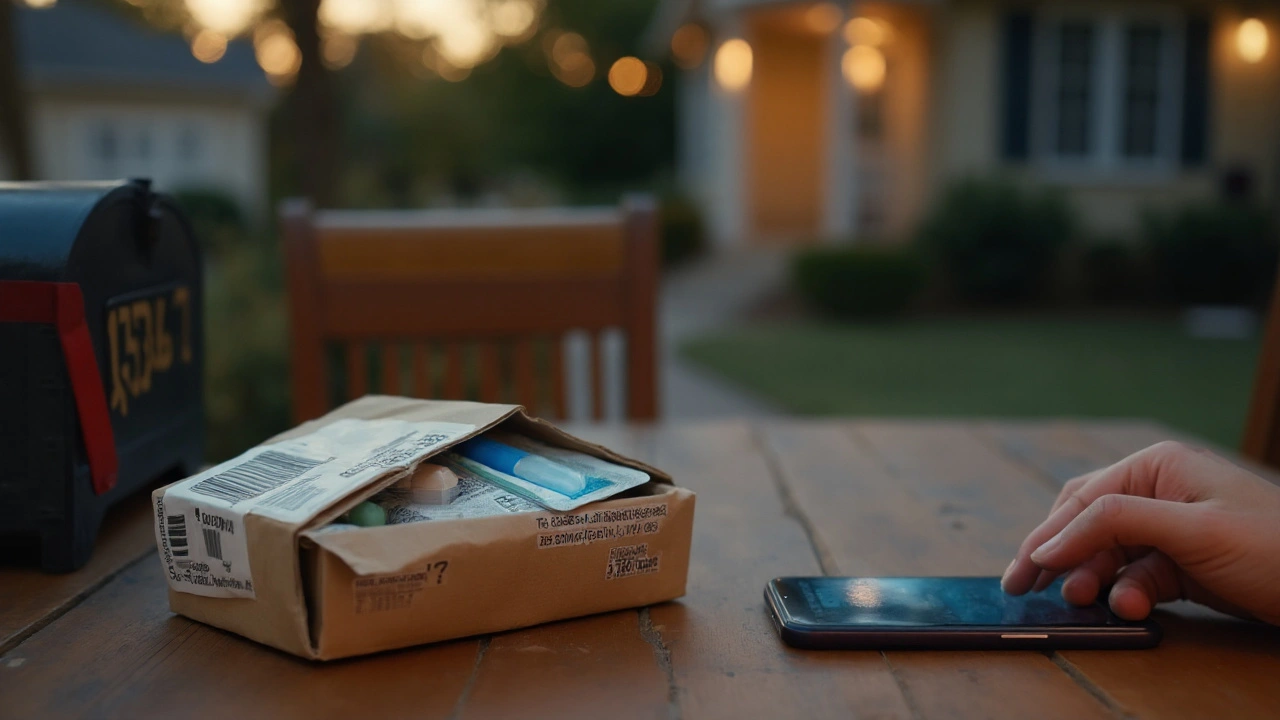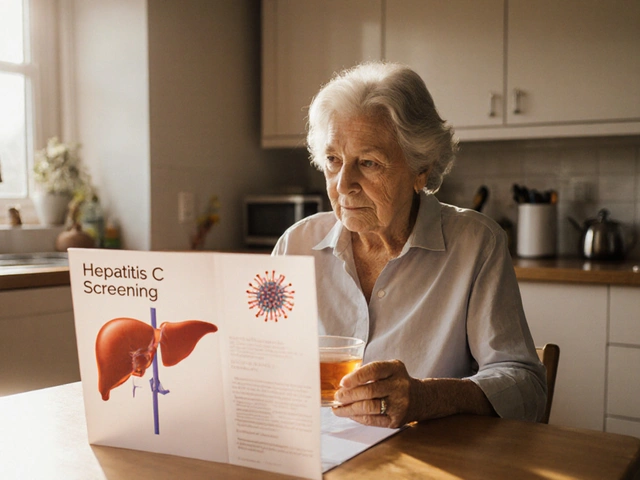You want a cheap albuterol inhaler, fast, without stepping into a risky corner of the internet or overpaying. Here’s the reality: in most countries, albuterol (salbutamol in the UK) is prescription-only, and the lowest prices show up when you stick with regulated pharmacies, use generics, and know a few cost-saving moves. I’ll show you how to spot legit sites, what a fair price looks like, what to buy, and what to do if you need relief now. If you’re thinking, “Just tell me where to buy generic albuterol online safely and cheaply,” you’re in the right place-just expect a prescription check and a bit of smart comparing rather than a one-click miracle.
What to buy: albuterol/salbutamol basics, devices, and specs
Start with the exact thing you need: a short-acting beta-agonist (SABA) reliever inhaler. In the UK, it’s called salbutamol; in the US, albuterol. The medicine relaxes the muscles around your airways to ease wheeze, cough, and tightness. It’s for quick relief, not long-term control.
Most adults and teens use a pressurised metered-dose inhaler (pMDI) with 100 micrograms per puff, typically 1-2 puffs as needed for symptoms. Many canisters contain about 200 metered doses. Check your prescription label for device and strength; if you’re switching brands or devices, confirm the dosing matches. For kids, dosing is usually similar per puff but adjusted by a clinician, and technique matters even more-spacers help.
Generic vs branded: the active ingredient is the same. In the UK, “salbutamol inhaler 100 micrograms” is the generic; “Ventolin” is the brand. In the US, “albuterol HFA” is generic; “Ventolin HFA” and “ProAir HFA” are brands. Generics are typically cheaper and just as effective when used correctly. Packaging, propellant, and the feel of the spray can differ, but the therapeutic effect should be equivalent when the dose is the same.
Device types you’ll see:
- pMDI (the common canister): small, fast, works with spacers. Most people use this.
- Breath-actuated inhalers (BAI) or dry powder devices: sometimes easier if you struggle to time your breath with the spray. Not as common for albuterol/salbutamol in some regions.
- Nebuliser solutions: liquid doses for use in a nebuliser machine. Useful for certain patients, but less portable, and you’ll usually need kit and instructions.
Specs to check before you buy:
- Active ingredient and strength: salbutamol/albuterol 100 micrograms per actuation is standard for pMDIs.
- Doses per canister: roughly 200, sometimes 180 depending on brand.
- Expiry date and lot/batch number printed on the box and device.
- Leaflet in your language, with the correct regulator’s details (e.g., MHRA in the UK, FDA labeling in the US).
Use and safety at a glance: a typical as-needed dose is 1-2 puffs for symptoms. Needing it more than twice a week (for asthma) often signals poor control; that’s a “call your clinician” flag rather than a “keep chasing refills” situation. Common side effects are tremor, a faster heartbeat, and jitteriness; they’re usually short-lived. If you get chest pain, severe breathlessness, bluish lips, or you’re not improving, seek urgent care.
Authority check: everyday practice lines up with NHS and NICE guidance in the UK, FDA labeling in the US, and the Global Initiative for Asthma (GINA) recommendations, which also stress the role of inhaled corticosteroids (ICS) for long-term control.

Where to buy it online safely (and what a fair price looks like)
Quick truth: licensed pharmacies will ask for a valid prescription or run an online consultation with a clinician. That’s a good thing-it filters out counterfeits and keeps dosing and device choices sane. The easiest route is to use a regulated online pharmacy in your country, upload your prescription, or complete their assessment for a prescriber to review. Avoid any site that ships prescription inhalers with no questions asked.
How to vet an online pharmacy (UK focus, with notes for elsewhere):
- Check it’s on the General Pharmaceutical Council (GPhC) register if it claims to be a UK pharmacy. They must show their pharmacy name and registration number on the site.
- If the site offers an online consultation and prescription, look for Care Quality Commission (CQC) registration (England) or the equivalent in Scotland, Wales, or Northern Ireland.
- Look for a clear UK address and a named superintendent pharmacist. Real sites don’t hide behind PO boxes and chat apps.
- Payment should be through secure gateways. Prices shown should be transparent, with any consultation fee listed upfront.
For the US: verify state pharmacy licensure (the site should list the state(s) and license numbers), and check prescribers are licensed. Expect to provide ID for controlled items (albuterol isn’t controlled, but some platforms still verify ID).
Typical price ranges you can use to sanity-check what you’re seeing online (these vary by region, supply chain, and fees):
| Product | Rx Status (UK / US) | Device & Strength | Typical Online Price (UK) | Typical Online Price (US) | Doses per Unit | Shipping Notes |
|---|---|---|---|---|---|---|
| Generic salbutamol (albuterol) HFA | Prescription / Prescription | pMDI, 100 mcg per puff | £6-£12 per inhaler + possible consult fee (£0-£25) | $20-$60 cash with discounts; telehealth may add $10-$30 | ~200 puffs | Usually 1-3 business days domestically |
| Ventolin (brand) | Prescription / Prescription | pMDI, 100 mcg per puff | £14-£25 per inhaler | $50-$90 cash price range | ~200 puffs | 1-5 business days; watch for brand-specific backorders |
| Levalbuterol (US brand: Xopenex) | Not typical / Prescription | pMDI, 45 mcg per puff (US) | Not common online privately | $50-$100 cash; variable | ~200 puffs | 1-5 business days; availability varies |
| Salbutamol / Albuterol nebuliser solution | Prescription / Prescription | 2.5 mg in 2.5 mL single-use vials | £5-£15 per box + device costs | $10-$30 per box; device extra | Varies by box | Plan extra time for devices and accessories |
Those ranges are ballparks, meant for comparison-not quotes. If you see “£3 Ventolin, no prescription needed, shipped worldwide,” that’s a red flag for a fake or diverted product.
Ways to actually pay less without cutting corners:
- Ask for the generic by default. It’s usually the same relief at a lower price.
- Stay on one device if it works for you. Switching around can increase errors and waste.
- Use a spacer with pMDIs. You get better lung deposition, which can reduce how often you reach for the inhaler.
- In England, if you pay NHS prescription charges, a Prescription Prepayment Certificate (PPC) can slash costs if you have multiple items per month. Check current rates before buying privately.
- Compare 2-3 regulated online pharmacies and your local pharmacy. After adding delivery and consultation fees, your local might win.
- In the US, pharmacy discount programs can drop the cash price. Telehealth platforms often show “with coupon” pricing-compare before you click.
Terms you’ll likely see during checkout:
- Prescription validation: upload, e-prescribe, or complete an online questionnaire reviewed by a clinician.
- Quantity limits: many sites cap the number of inhalers per order for safety.
- Shipping: standard and tracked options. Reliever inhalers don’t need cold-chain shipping.
- Returns: pharmacies usually can’t accept returns of dispensed medicines unless the error is theirs.
What about timing? If you’re out today, online might not be fast enough. Same-day courier is rare and pricey. For urgent needs, contact your local pharmacy and clinician; in some places, pharmacists can make an emergency supply if the medicine is previously prescribed and appropriate.

Risks, smarter options, FAQs, and your next steps
Here’s how to stay safe while you save money.
Red flags that scream “don’t buy here”:
- No prescription needed for a prescription-only medicine.
- Prices that are unrealistically low, heavy use of messaging apps, no physical address, or no regulator details.
- Non-matching packaging, misspellings, or no patient leaflet.
- “Bulk” offers on prescription inhalers or cross-border shipping that sidesteps your country’s rules.
Health risks of cutting corners:
- Counterfeit or degraded medicine can fail when you need it most.
- Overuse without a preventer plan can mask worsening control. Relievers alone don’t fix airway inflammation.
- Switching devices without guidance can tank your inhaler technique and control.
Smarter options if costs keep creeping up:
- Ask your clinician about adding or optimising an inhaled corticosteroid (ICS). Many adults with asthma now use an ICS-containing inhaler daily or even as a reliever strategy (e.g., budesonide-formoterol) per GINA guidance. That can reduce flare-ups and how often you need a SABA.
- Check if a two- or three-monthly repeat setup is possible via your usual prescriber so you’re not paying extra consult fees each time.
- If a brand is pricier, ask for the generic device you can use well. Technique beats brand every day of the week.
- For exercise-induced symptoms, confirm the diagnosis and plan. Sometimes a preventer tweak removes the need for frequent pre-exercise puffs.
Short checklist: buying albuterol/salbutamol online the right way
- Decide your product: pMDI 100 mcg, check canister dose, and whether you use a spacer.
- Have a current prescription or use a regulated online consultation.
- Verify the pharmacy (GPhC/CQC in the UK; state boards in the US).
- Compare total costs including delivery and consultation fees.
- Order a reasonable quantity; avoid stockpiling.
- On arrival: check packaging, batch, expiry, and leaflet. Test spray if the leaflet advises it and prime if needed.
Mini‑FAQ
- Is albuterol/salbutamol available over the counter? In most places, no. In the UK and US, it’s prescription-only. Some countries allow pharmacy supply under specific rules, but reputable online sellers still run a prescription or consultation.
- Is generic the same as Ventolin? It’s the same active ingredient and dose when labeled the same, meeting strict quality standards. The spray feel or taste may differ; relief should be equivalent with correct technique.
- How many puffs are in an inhaler? Usually around 200 metered doses. Some canisters don’t have dose counters-track your use and replace before it runs dry.
- Can I use an expired inhaler? It might deliver less medicine than labeled. For safety, replace it. In a pinch, use what you have and seek urgent help if symptoms are severe.
- Why do I need it so often? Frequent need usually means poor control. Talk to a clinician about preventer options (ICS or ICS/LABA) and an action plan. That’s standard in NHS, NICE, and GINA guidance.
- How fast is shipping? Domestic shipping is often 1-3 business days. Same-day is rare. If you’re out now, contact your local pharmacy and clinician for an urgent solution.
- What if I prefer a different inhaler brand? Ask your prescriber to specify it. If switching, get a quick technique check-small changes matter.
- Can I buy from abroad because it’s cheaper? Importing prescription medicines can breach local laws and raises counterfeit risk. Use licensed pharmacies in your country.
Decision points and trade‑offs
- Generic pMDI vs brand pMDI: generic usually wins on price; brand may have a dose counter or a spray feel you prefer. If adherence improves with a counter, that can justify the brand.
- pMDI vs nebuliser: pMDI with a spacer is portable and fast for most people. Nebulisers are useful in some clinical settings but are bulkier and slower.
- Stay on SABA-only vs add preventer: if you’re using a reliever often, the cost-effective move is usually adding an ICS or an ICS/LABA reliever plan to cut exacerbations and urgent refills.
Clear, ethical next steps (choose what fits your situation):
- If you have a current prescription: compare 2-3 regulated online pharmacies, add delivery and any consult fees, and pick the best total price. Order before you run low (when the counter hits around 40-50 puffs or a few weeks’ use left).
- If you don’t have a prescription: book a quick consult with your regular clinician or use a regulated online service that includes prescribing. Expect safety questions about symptoms, frequency, and your preventer.
- If you’re out now and breathless: don’t wait for the post. Contact a local pharmacy and your clinician urgently; in many places, pharmacists can arrange an emergency supply if appropriate. If symptoms are severe or not improving, seek emergency care.
- If cost is the blocker: ask for generic, explore a prepayment certificate (England), compare local vs online, and discuss preventer options that reduce reliever use.
Troubleshooting by scenario
- You ordered online and it’s delayed: contact the pharmacy for tracking; ask your local pharmacy about an emergency supply if you’re running out.
- The inhaler feels different and doesn’t seem to work: check primer instructions (some need test sprays when new), confirm the dose and device match, and do a technique check with a clinician or pharmacist. If still ineffective, seek medical advice.
- Side effects (tremor, palpitations): reduce unnecessary extra puffs; check if caffeine or decongestants are adding to jitteriness; talk to a clinician if it’s persistent or severe.
- You’re using it daily: this is a signal to review your preventer. That change usually saves money and hassle in the long run.
- Traveling soon: take a spare, keep one in carry-on, and check destination rules for carrying inhalers. Order at least a week before departure.
Why trust this approach? It mirrors what regulators and clinical guidelines push for: licensed supply chains (MHRA/GPhC in the UK; state boards and FDA oversight in the US), evidence-based asthma care (NICE/GINA), and clear labeling and dose consistency. You’ll pay less by choosing generics, planning ahead, and fixing the root cause of frequent symptoms-not by gambling on a too-good-to-be-true website.




Comments
16 Comments
Mindy Bilotta
Just got my generic salbutamol from a Canadian pharmacy with a US script-£8 shipped to Ontario. No drama, no sketchy sites. Just upload your Rx, wait 2 days, and boom. Saved me $40 vs my local CVS. Seriously, don’t overthink it.
Michael Bene
Oh wow, so you’re telling me the government doesn’t want me to buy a life-saving inhaler for $3 off some Telegram bot? Shocking. Next you’ll say the moon landing was real and that ‘albuterol’ isn’t just a marketing ploy by Big Pharma to make you buy 200 puffs of vaporized regret. I’ve been using a vape pen with eucalyptus oil since 2018 and my asthma’s never been better. Also, my cat sneezes more than I need to use my inhaler. Coincidence? I think not.
Brian Perry
Wait so you’re saying I can’t just order 10 inhalers off Amazon because ‘it’s cheaper’? Bro that’s just capitalism. I’ve been buying my Ventolin from a guy in Ukraine who texts me ‘u got the money?’ and then sends a tracking number. It works. My lungs are fine. Why do we need all these ‘regulations’? I’m not a child. Also, I think my inhaler tastes like pennies now. Maybe that’s the good stuff?
Chris Jahmil Ignacio
Let me guess you’re one of those people who thinks the FDA is your friend. They’re not. They’re just another branch of the same globalist cabal that controls your insulin prices and your birth control. You think generic albuterol is safe? What if the active ingredient is just sugar and glitter? What if the propellant is laced with lithium? I’ve seen the documents. The real reason they make you get a prescription is so they can track you. You think your asthma is bad? Wait till they start controlling your breathing patterns through your smart inhaler. You’re being played. And don’t even get me started on spacers. That’s just a gateway to the nebulizer industrial complex.
Paul Corcoran
Hey everyone, I just wanted to say this guide is actually really helpful. I’ve been using albuterol for 12 years and I didn’t even know about the PPC in the UK-that’s genius. I’m in Michigan and found a local pharmacy that matches the online prices with free pickup. No shipping, no waiting. Just walk in with your script. Also, if you’re struggling with technique, ask your pharmacist for a demo. They’re trained for this stuff. You don’t need to be a rocket scientist to use an inhaler. Just breathe slow, use the spacer, and don’t panic. You’ve got this.
Colin Mitchell
Just wanted to add-my buddy in Texas got his generic albuterol through a telehealth clinic for $22 with shipping. Used GoodRx. No prescription? Nope. But he did a 5-minute video consult with a nurse practitioner who asked him about symptoms and past usage. That’s it. No drama. No scam. Just smart healthcare. If you’re scared of online, start there. They’re not trying to sell you snake oil. They’re trying to help you breathe. And that’s cool.
Stacy Natanielle
Wow. This is so… informative. I mean, it’s not like anyone has ever died from using a counterfeit inhaler, right? 😅 I just love how the author says ‘avoid sites that ship without a prescription’ like that’s some kind of moral victory. Meanwhile, my cousin in Puerto Rico got her inhaler from a guy who works at a pharmacy in the Dominican Republic. She paid $5. Her asthma is fine. She’s alive. So maybe the ‘regulations’ are just… barriers to access? 🤔 Also, did you know that in some countries, you can buy albuterol at the corner store? Like candy? 😍
kelly mckeown
i just wanted to say thank you for this. i’ve been using ventolin for 8 years and never knew the generic was the same. i was scared to switch because i thought the ‘feel’ mattered. turns out, it’s just the spray. i switched to generic last month and saved $50. my lungs didn’t notice. my wallet did. 😊 also, if you’re using it more than twice a week… yeah, you probably need a preventer. i didn’t want to hear that, but my doc was right. it’s not weakness. it’s just… smarter.
dylan dowsett
Wait. You’re telling me… that I need a PRESCRIPTION for a drug that’s been used since 1969? That’s ridiculous. I’ve been using albuterol since I was 10. I know my body. I know when I need it. Why should some bureaucrat in a lab coat decide what I can and can’t buy? Also, why are you so obsessed with ‘spacers’? That’s just a fancy toy. My inhaler works fine without it. And why are you pushing ICS? Are you trying to make me dependent on steroids? I’ve seen what steroids do to people. I’m not falling for it. You’re all just scared of freedom.
Susan Haboustak
Let’s be real. This entire post is a corporate shill. The ‘generic vs brand’ argument is a distraction. The real issue is that pharmaceutical companies have colluded with regulators to keep prices high. The fact that you’re recommending ‘regulated pharmacies’ is laughable. Those pharmacies are owned by the same conglomerates that manufacture the drugs. You’re not saving money-you’re just paying a middleman with a better website. And don’t get me started on ‘consultations.’ That’s just a way to charge you $30 to say ‘yes, you still need your inhaler.’ Pathetic.
Chad Kennedy
bro i just bought 3 inhalers off a guy on reddit for $15 each. no script. no questions. shipped from mexico. i’ve been using them for 3 months. no problems. why are people making this so hard? i don’t care about ‘regulations.’ i care about breathing. if you’re scared of buying online, you’re just scared of saving money. also, my inhaler doesn’t have a counter. i count puffs in my head. works fine. stop overcomplicating things.
Siddharth Notani
Excellent summary. As a respiratory therapist in Delhi, I see patients struggle daily with access. Generic albuterol is equally effective when used correctly. The key is technique-not brand. Many patients use pMDIs without spacers and wonder why they don’t improve. A simple spacer, even a plastic bottle cut in half, can double efficacy. Also, if cost is an issue, many Indian pharmacies offer bulk generics at 1/10th the US price. Just ensure they’re licensed. Safety first, savings second.
Cyndy Gregoria
Okay, I’m so glad this exists. I was about to panic because my inhaler ran out and I didn’t want to pay $80 at CVS. I found a legit online pharmacy with a $25 consult and got my generic for $18. Total cost: $43. I did it. I’m breathing. I’m proud. If you’re scared, just start small. One order. One consultation. You’re not broken. You’re just trying to survive. And you’re doing it. 💪
Akash Sharma
This is incredibly detailed and I appreciate the breakdown of device types and pricing. I’ve been using a nebulizer for years because I thought it was ‘more effective,’ but after reading this, I realize I’ve been wasting time and money. The pMDI with spacer is far more practical for daily use. Also, I didn’t know that the propellant differences could affect delivery efficiency. I’m going to ask my pulmonologist about switching. One question though-what’s the shelf life of the generic after opening? The leaflet doesn’t say. And is there any difference in the aerosol particle size between brands? I’m curious about the science behind it.
Justin Hampton
So you’re telling me the only safe way to get albuterol is through the system? That’s hilarious. The system is rigged. The system is why my cousin died last year because she couldn’t afford her inhaler. The system doesn’t care. The system wants you to pay $60 for a canister that costs $2 to make. Don’t be fooled. The ‘regulated pharmacies’ are just the clean face of the same machine. If you want real freedom, stop playing by their rules. Buy from the underground. It’s not dangerous-it’s defiant.
Pooja Surnar
OMG how can you even recommend buying from online pharmacies?? This is so irresponsible!! You’re literally encouraging people to break the law!! What if someone dies because they got a fake inhaler?? You think you’re helping but you’re just enabling reckless behavior!! People need to go to their DOCTOR!! Not some sketchy website!! I can’t believe you’re even posting this!! This is why the world is falling apart!! 😭
Write a comment